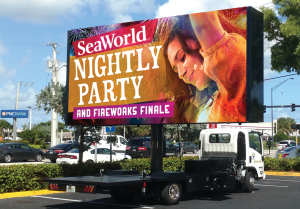Advertising Costs Don’t Stay Static—Seasonality Plays a Major Role
If you’ve ever felt like your digital ad budget stretches further in February than in November, you’re not imagining things. Advertising costs are deeply influenced by seasonal demand, and for marketing professionals, understanding this cycle can mean the difference between a high-ROI campaign and a budget drain.
Whether you’re working with Google Ads, social media campaigns, or traditional media buys, ads costs fluctuate based on industry trends, holidays, consumer behavior, and even global events.
This blog breaks down the why, when, and how of seasonal demand fluctuations—and how to manage your ad costs to stay competitive without overspending.
Why Advertising Costs Spike During Certain Seasons
Let’s start with the basics: ad cost is largely determined by supply and demand. During high-demand periods, such as holidays or key shopping seasons, more businesses compete for limited ad inventory—driving ads cost up across platforms.
What drives seasonal advertising cost changes?
Consumer purchasing behavior (e.g., Black Friday, back-to-school, holidays)
Industry-specific cycles (e.g., tax season for financial services, summer for travel brands)
Event-based surges (e.g., Super Bowl, Olympics, elections)
End-of-quarter or end-of-year budget spending
These factors put pressure on cost advertising, forcing brands to either bid higher or risk losing visibility altogether.
Monthly Breakdown: When Ad Costs Rise and Fall
Here’s a simplified look at how ads cost tends to fluctuate by quarter:
Q1 (Jan–Mar): Lower Competition, Lower Cost
Many brands cut back after holiday spending
Ad costs tend to be lower
Great time for brand awareness campaigns and testing creatives
Q2 (Apr–Jun): Climbing Toward Peak
Budgets reset, businesses ramp up
Spring promotions and early summer deals drive competition
Cost ads begin to rise steadily
Q3 (Jul–Sep): Event-Driven Spikes
Back-to-school and Labor Day sales increase ads cost
Travel and leisure brands dominate ad space
Political ad spending may begin if it’s an election year
Q4 (Oct–Dec): The Budget Battleground
Black Friday, Cyber Monday, and holiday shopping send advertising costs through the roof
High competition for keywords and impressions
B2B companies may also push to close Q4 leads before year-end
If your brand isn’t prepared for Q4 competition, you’ll either overpay or underperform—neither is ideal.
How Seasonal Demand Varies by Industry
While everyone feels the Q4 crunch, seasonal cost advertising spikes don’t hit all industries the same way. Understanding your vertical’s demand curve is crucial for strategic planning.
Industry |
High-Cost Seasons |
Low-Cost Opportunities |
Retail |
Q4 (holidays), Q3 (back-to-school) |
Q1 (post-holiday slump) |
Travel & Tourism |
Q2–Q3 (spring/summer) |
Q4 (winter lull, excluding holidays) |
Finance & Tax |
Q1–Q2 (tax season) |
Q3 |
Education & EdTech |
Q3 (enrollment periods) |
Q1 |
Fitness & Wellness |
Q1 (New Year’s resolutions) |
Q3 |






